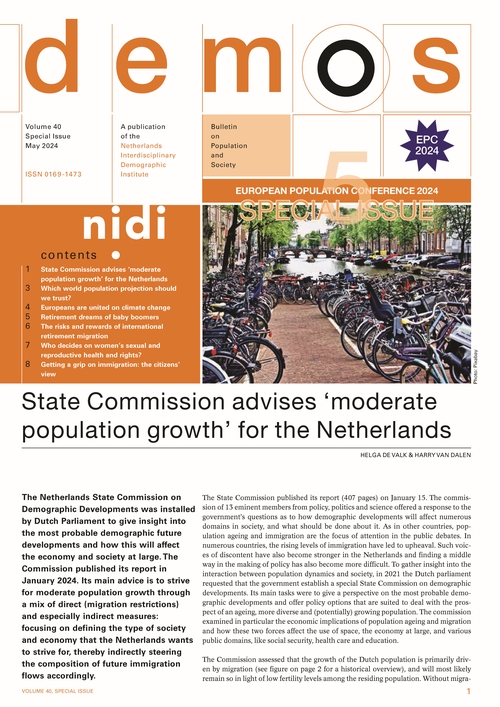Recently, a new forecast of the world’s population, commissioned by the Club of Rome, was published by a group of scientists called Earth4All. The Club of Rome is well known for its report ‘The Limits to Growth’, published in 1972, which warned that humanity was heading for catastrophe if the consumption and use of resources were not drastically reduced. Earth4All made the news because their two scenarios are much lower than the other global population projections, made by the United Nations (UN), the Wittggenstein Centre for Demography and Human Capital (WCDE) and the Institute for Health Metrics and Evaluation (IHME). How should we evaluate these different projections? The methodology of the four projections is different. They can be ranked according to increased complexity. The UN model, although statistically sophisticated, is purely demographic, and relies on the universal shape of the demographic transition. The WCDE and IHME projections take educational expansion of the population into account as a key driver of demographic behaviour. In addition, the IHME projections use uptake of contraceptives as a driver of fertility change. These projection models produce various scenarios, which are based on different assumptions regarding these drivers. The Club of Rome projection model is the most complex, with important feedback effects between population, economy and ecology.
Despite these differences in approaches, the forecasters agree on a number of things. Clearly, the world population will decline before the end of the century, although the exact timing of the population peak is different (see figure). There is also reasonable agreement among three of the four forecasters about the world population size in 2050: between 9.4 and 9.7 billion. However, the differences are also large. The predicted population sizes at the end of this century range from 7.3 (Club of Rome) to 10.3 billion (UN).

Hence, the further away in time, the greater the uncertainty and the differences between the forecasts. The comparison of the forecasts shows that the use of additional variables and more complexity in the forecast has a clear downward effect on the level of the forecast. Most demographers recognise the added value of educational attainment as an explanatory and predictive factor of demographic developments. It is therefore no coincidence that the two forecasts that take this into account in their approach arrive at approximately the same result that is lower than the UN forecast. Therefore their results are probably more plausible than the higher UN forecast. The Club of Rome scenarios rely heavily on income, not education, as a key driver, which, together with the feedback relationships lead to even lower outcomes. However, predicting economic development is even more uncertain than predicting population development!
Leo van Wissen, NIDI-KNAW/University of Groningen, e-mail: wissen@nidi.nl
Literature
- Callegari B. and P.E. Stoknes (2023), People and planet: 21st century sustainable population scenarios and possible living standards within planetary boundaries. Earth4All, March 2023, version 1.0.
- Lutz, W. et al. (2018), Demographic and human capital scenarios for the 21st century: 2018 assessment for 201 countries, Publications Office of the European Union, Luxembourg.
- UN, (2022), World Population Prospects, UN Population Division, New York.
- Vollset, S.E. et al. (2020), Fertility, mortality, migration, and population scenarios for 195 countries and territories from 2017 to 2100: a forecasting analysis for the Global Burden of Disease Study. The Lancet, 396 (10258), pp. 1285-1306.


